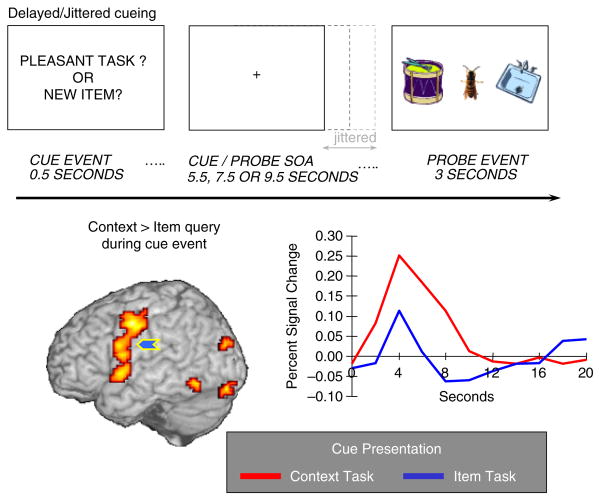Fig. 4.
Early recruitment of posterior prefrontal cortex (PFC) regions during contextual memory questions. During retrieval, subjects were shown object triplets containing two items that were previously studied and one novel item. Critically, for the studied items, each had been encoded using a different rating task. Whereas one of the studied items had been rated in terms of its pleasantness, the other had been rated with respect to the realism of its rendering. During retrieval, subjects were asked to select items associated with one of the prior rating tasks (e.g, “Pleasant Task?”) or to pick the novel items (“New Item?”). The key manipulation was the temporal separation of the memory question and the object triplet to which the memory question applied (5.5, 7.5, or 9.5 seconds). Because the questions preceded the triplets, activations in response to the questions could be isolated from activations that instead required the probe triplets to also be present. As shown in the line graph, the left posterior PFC demonstrated increased activity in response to context-memory questions (e.g., “Pleasant Task?”) compared to familiarity-based memory question (e.g., “New Item?”), even before memory probes were presented. The findings suggest that the posterior PFC is important for planning context retrieval and that contextually specific retrieval questions place a greater demand on these PFC regions even before subjects process the identity of the actual probe items to be evaluated (Dobbins & Han, 2006).

